How to trade 0DTE Options in a few steps

Financial conditions have been loosening very fast. When that happens you start seeing risk assets going to the moon. The chart below shows the financial conditions against the SPX Index. But you could have the same chart with Bitcoin or any other assets and you would see the same correlation.
What that means, is that the retail mania is back. We are seeing once again the retail trader betting hard. You can see as proof in the below.

The difference this time, compared to the last meme mania, is that traders are more focused on 0DTE. Fast products with less than 24 hours to expiry. This offers risks and opportunities. Last time, during the GameStop saga, a lot of retail traders lost a lot of money. But this time it does not have to be the same way.
This time around, Menthor Q is here. You have access to data, educational material under the forms of guides and professionals who can help you safely navigate these markets. You can start from the free guides here.
The Menthor Q Team
Every morning our team is available within the Trading Rooms of our Discord Server. We have a Trade Structuring Room as well as a Macro Room. You have access to our team. Your questions are always answered by a member of the team. This helps you learn and execute faster.
Our goal is to simplify the complex financial landscape and provide actionable data that anyone can comprehend and utilize to become a professional investor.
We now have 4 professional traders that are active everyday in our trading rooms:
- Chester manages our Macro Channel. Macro is very important to understand the forces that could affect the market. Macro is key for every trader and this is why we have a dedicated room.
- Doc and Punklandia manage our Trade Structure Channel where they mostly trade 0DTE SPX Options. Their focus is 0DTE Iron Condors but they also show their setups on stocks and how to better manage your risk. This is an example Case Study we released last week on OKTA and this is another on NVDA.
- Bart will start tomorrow and will be focused on TA and scalping. We welcome Bart to the team and excited for the content he will provide.
Our Traders have many things in common:
- They trade for living and this is their main activity
- They are experienced and have been doing this for many years. Doc has been trading since the 1990s and is now part of our community to help our users to learn
- They have different approaches to help you gain a different perspective on the market
How to trade 0DTEs in a few simple steps
Today we will look at how you can trade 0DTE with success. The trades that our traders put on are also tracked for performance in a separate channel, this way you can see how effective they are.
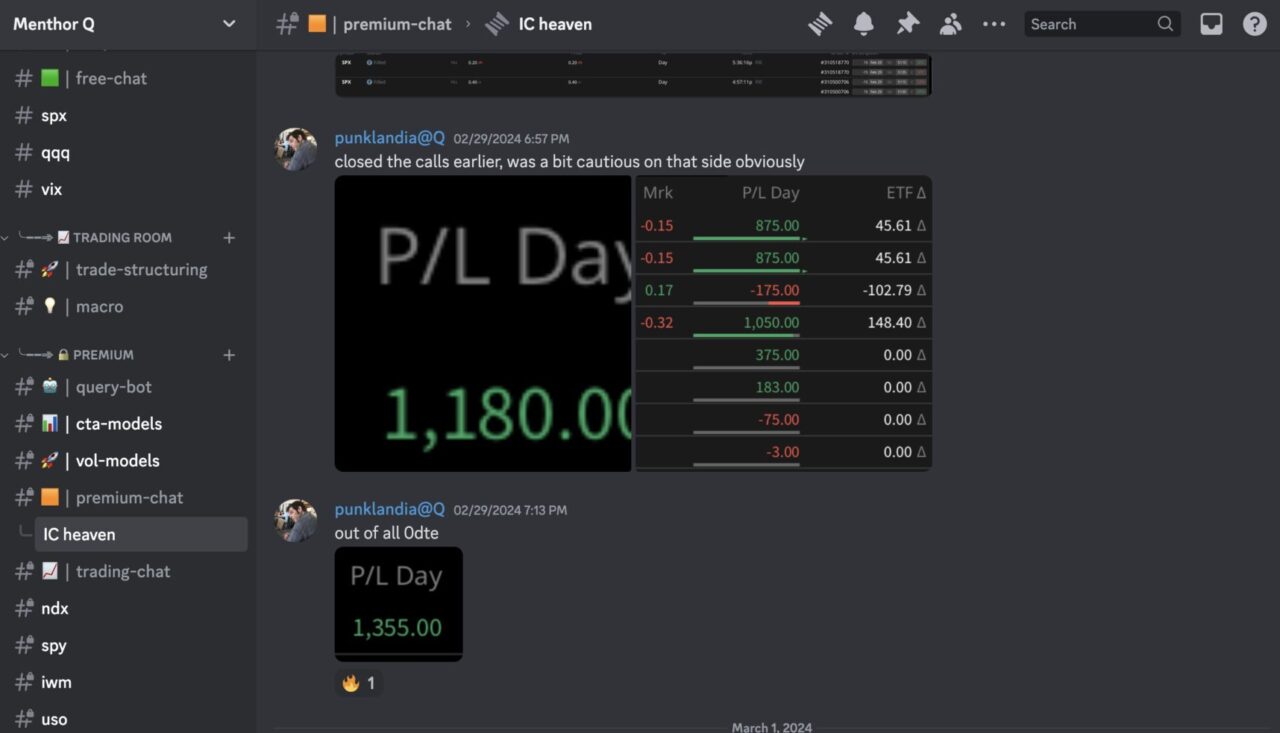
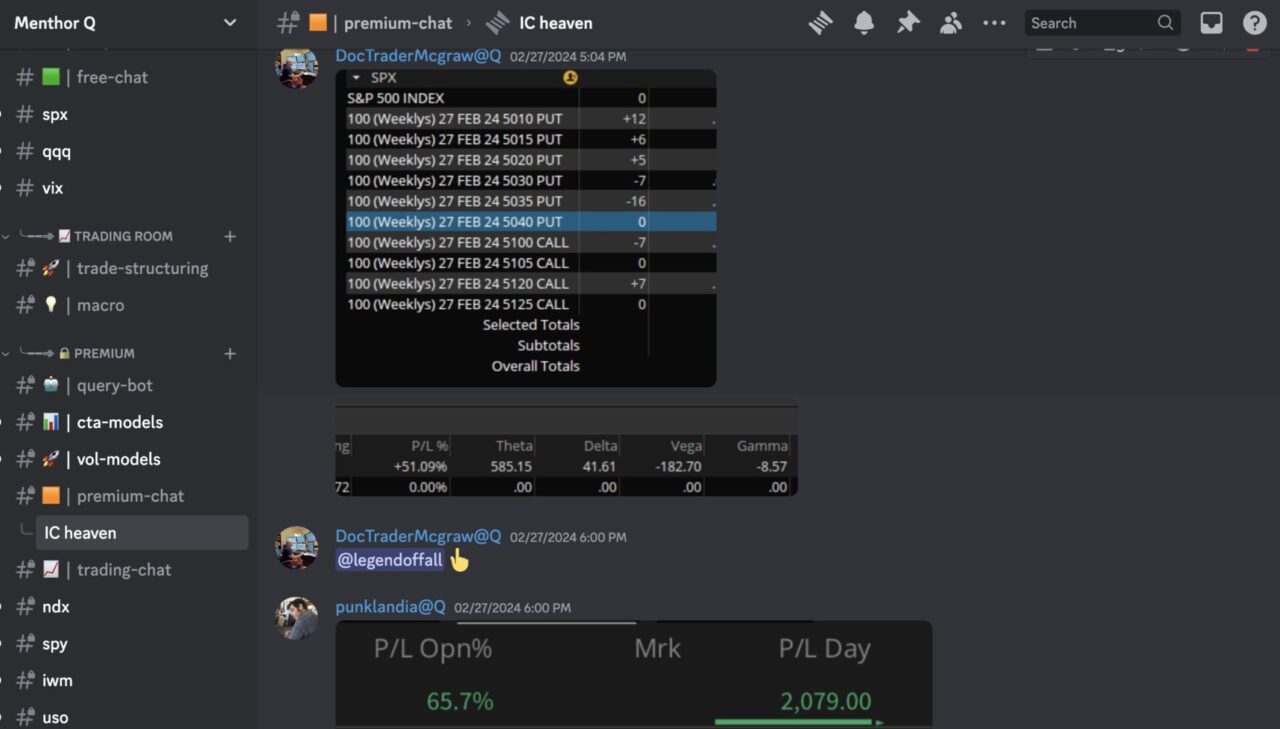
Breaking down the process
Let’s break down the process used by our traders everyday. Before you start there are a few things you should know when trading 0DTE Options:
- Options are risky and 0DTEs carry more risk as their time to expiration is limited
- There is more risk in buying 0DTEs and that is why our approach is to sell Call and Put Credit Spreads
- The first rule is to manage risk. This is why it is key to manage your Time in Trade. Our traders aim to limit their time in trade to better manage risk.
Step 1. Data
The first step is the data and that is provided by Menthor Q. Our daily Key Levels are the initial support for our traders. They serve as catalysts to define the strikes for your spreads. You want to position yourself as far OTM as possible but at the same time being able to bring home enough premium that can justify the risk.
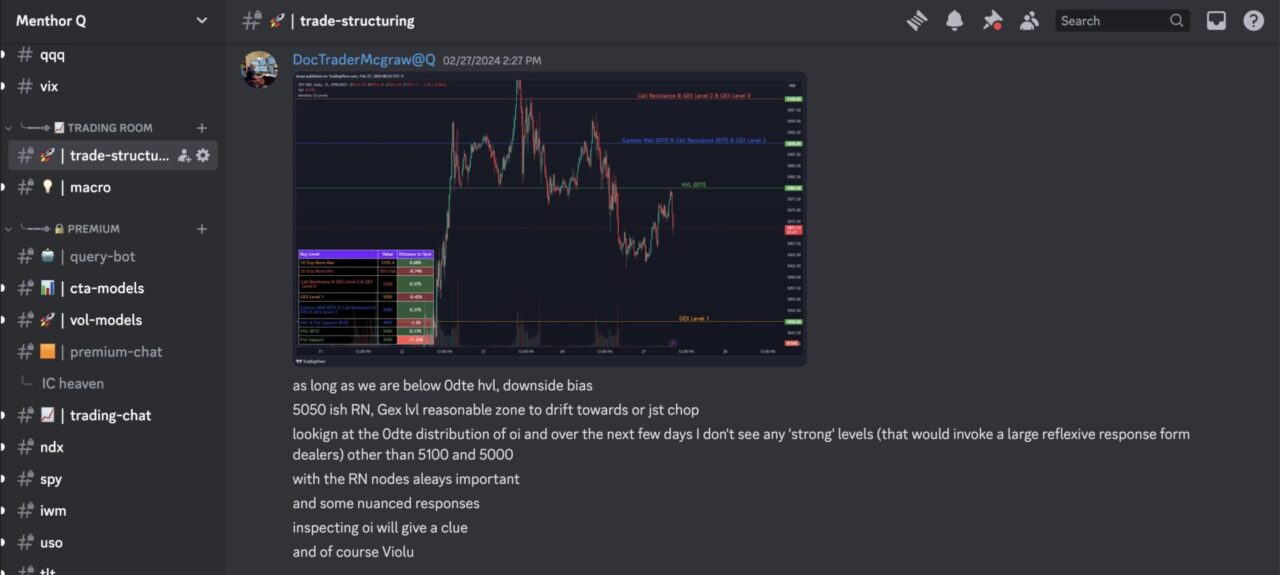
Step 2: Pre-Market Analysis
In the pre-market analysis, the first thing is to ensure that there is no noise during the day. Are there any Fed speakers out? Treasury issuance? Any important earnings reports etc. Once that is cleared, we then start looking at data using our models.
You can start with our Key Levels to allow you to see where most gamma activity is.
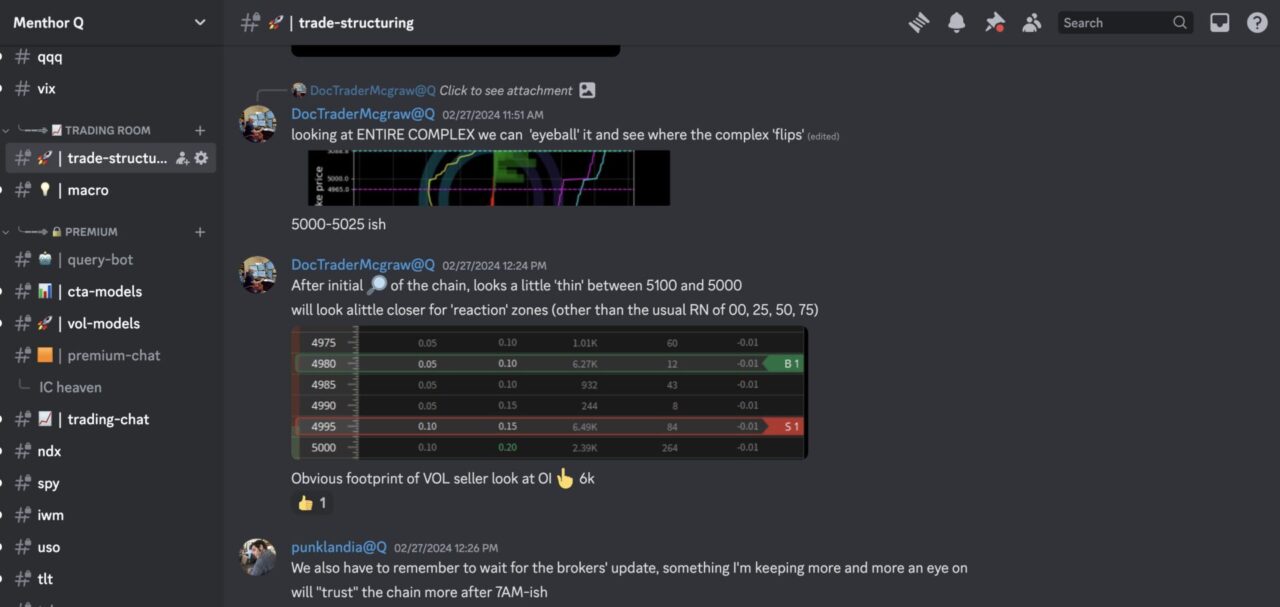
Next you want to jump into the option chain and look for relevant volumes and open interest around different strikes.
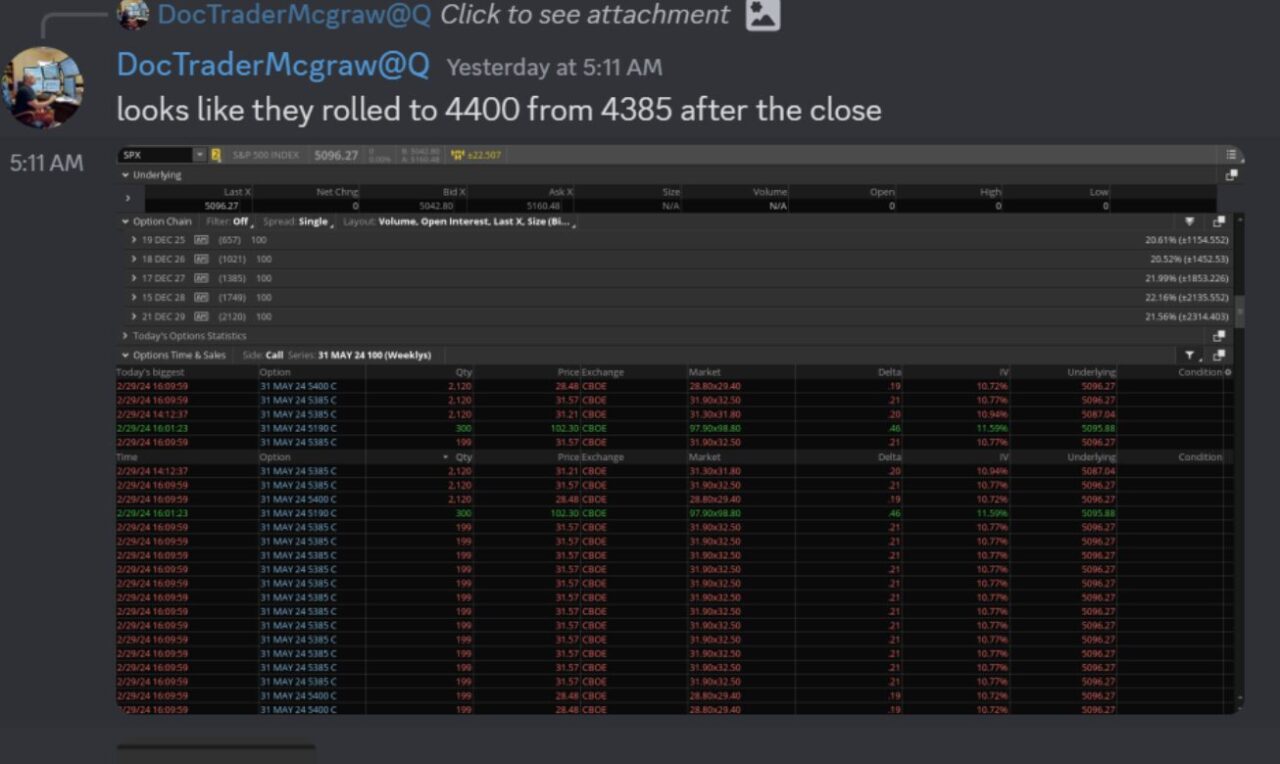
We do that to see which strikes before open are showing stronger relationships with the key levels. Looking at the chain we can also see the Delta of the strikes. That can tell us a lot about how market makers will react if volatility or spot increases/decreases. Please refer to this to understand how volatility affects delta.
There is a lot more here on how to look at our data before setting up a trade. Check out this Guide as well.
Step 3. Set up and Execution
The next thing our traders will do is execute a trade. The data helps us understand what the key strikes are to set up their plan. These can be used to set up your options spreads. Every morning we help you understand how to put on a set up.
The most important piece is the fill price. The market moves fast so getting the perfect fill is not always possible.
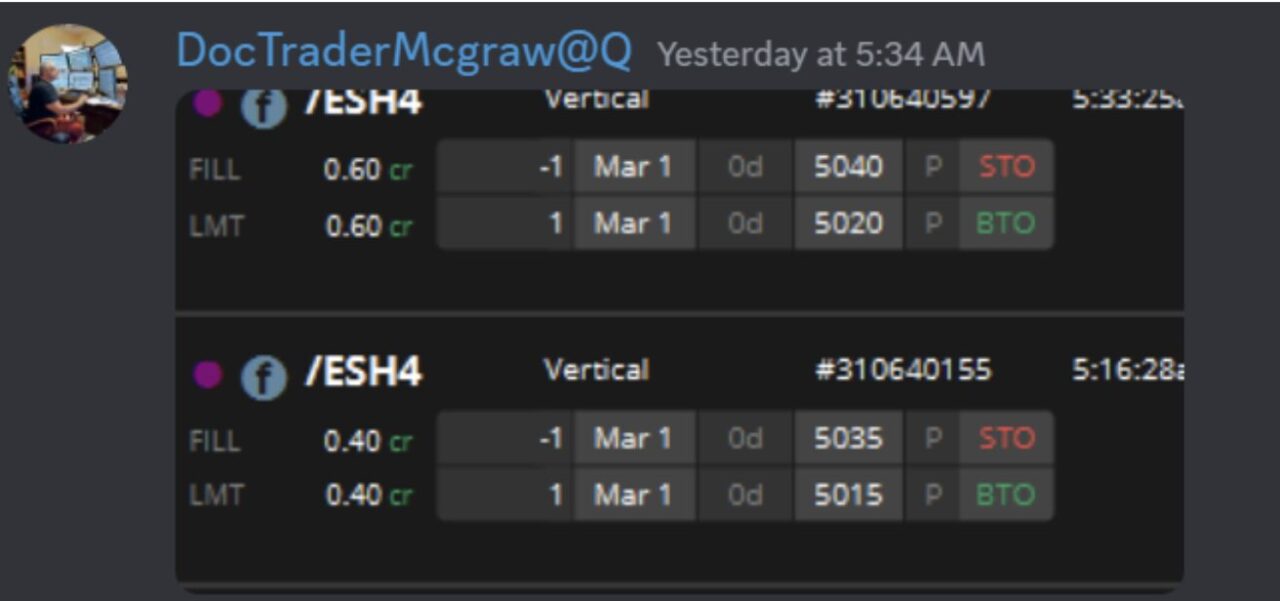
Step 4. Risk Management and Time in Trade
Once the trade is up, the next step is to manage risk. For example, monitoring the more risky levels, like the High Vol Level. This can tell us a lot about the price action, if the spot price moves towards it. Review the High Vol Level here.
In the below example, we can see how Doc is really managing his position around that High Vol level.
Time in Trade is also important. You want to stay in the trade as little as possible and realize as much gain. Our traders start at market open and try to be out within 90 minutes from the open.
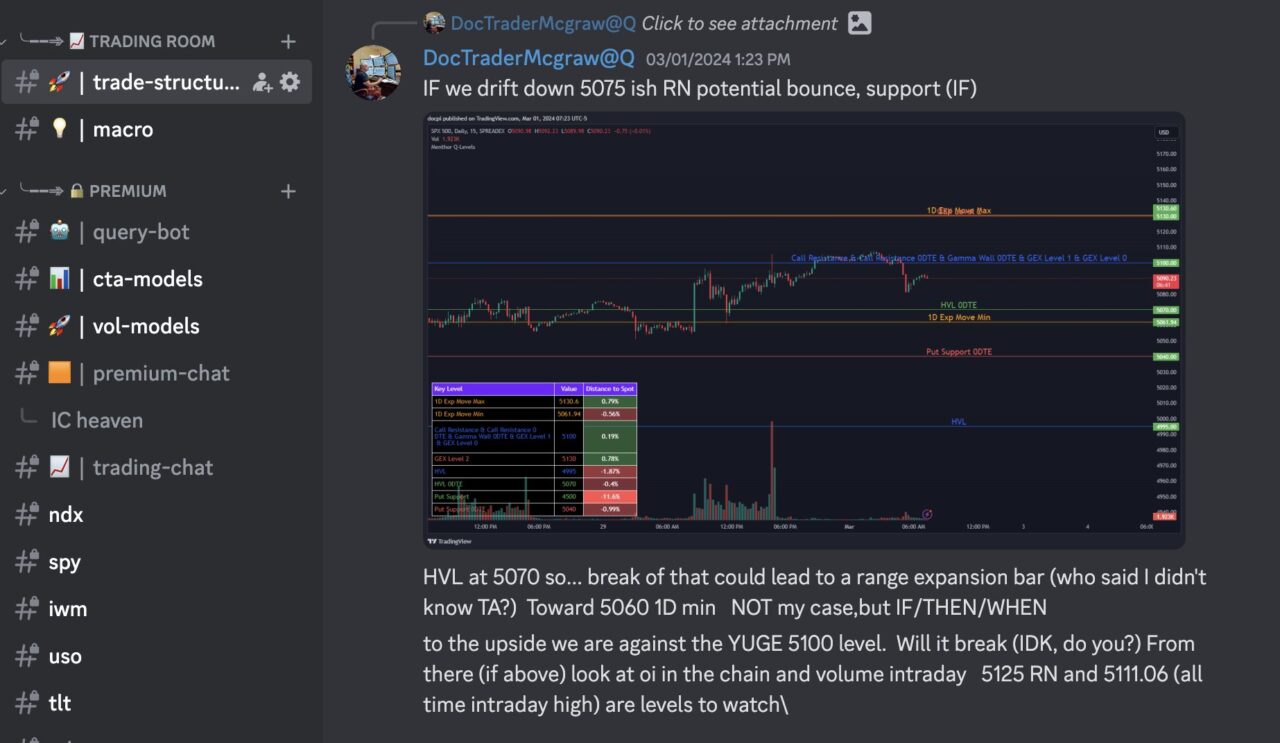
Throughout the day, the traders continue to look at live volumes around the key levels as well as volatility to try to understand how the market is re-positioning and how market maker delta hedging drives liquidity.
Remember, there are mechanisms in the market that create very specific flows, understanding them can help you manage risk and improve returns. Take a look at this Cheatsheet to understand how market makers hedge based on the movement of spot price.
Remember if things go bad you need to be able to get out of the position even at a loss.
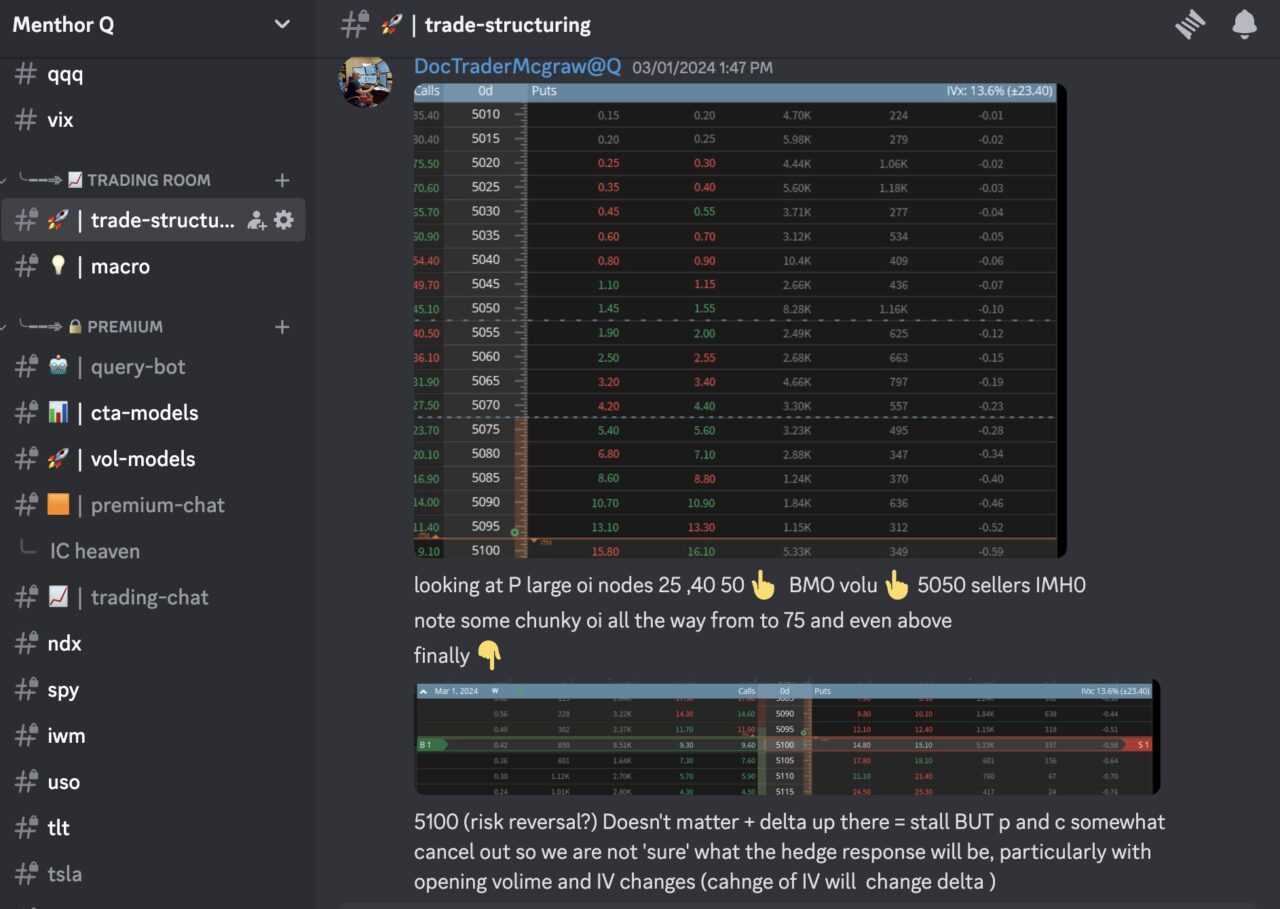
Conclusion
Our models support your choice of strikes to sell or buy. That is also very much influenced by volumes at open. The trading channels are a helpful tool to help your process. Once in the trade, one can start looking at live volumes to understand whether the key levels and the chosen strikes are “safe”, or “too close”.
Understanding how to trade is not easy. If it was, everyone would be a millionaire. It takes time, patience, learning fast from your mistakes and understanding that risk management comes before returns.
This community has everything you need if you are ready to put the time into it.
Join our Premium Membership to get access to our Traders and our Trading Rooms.
